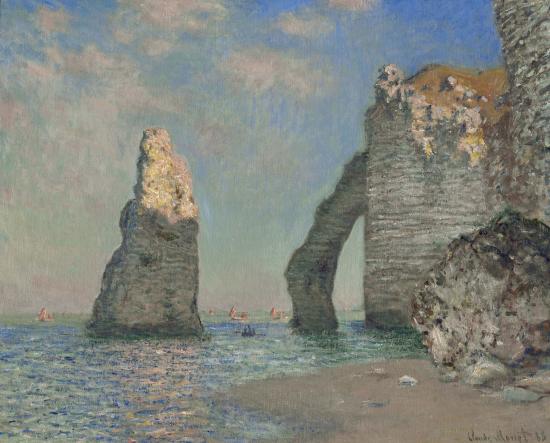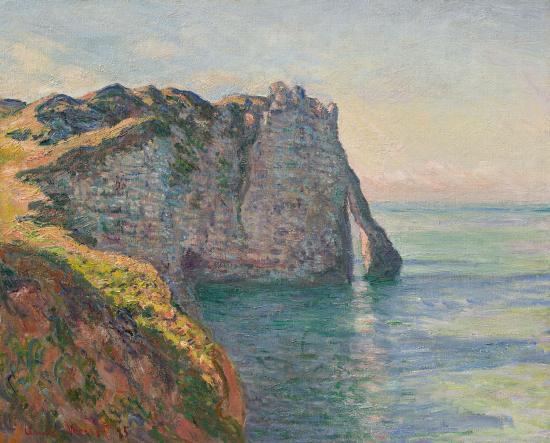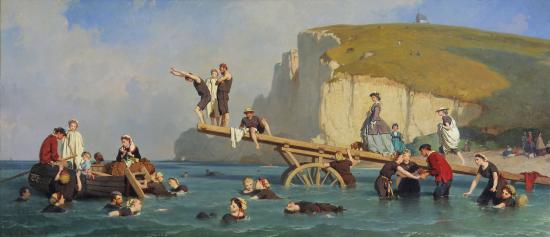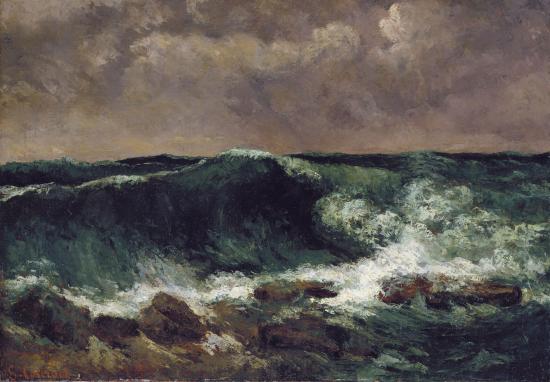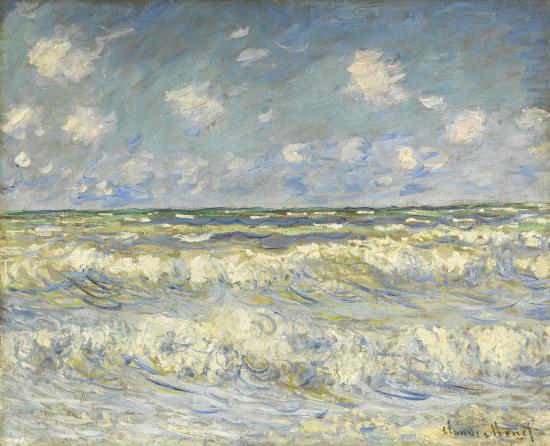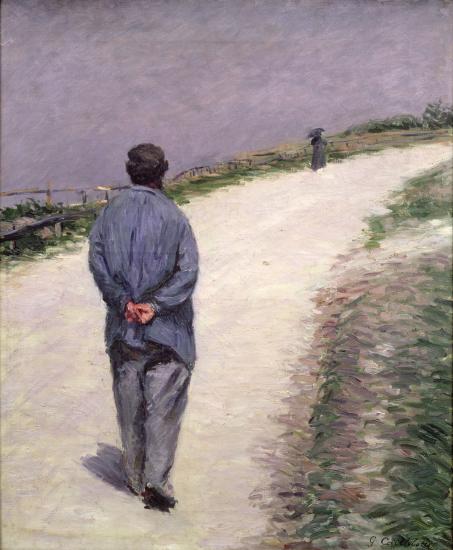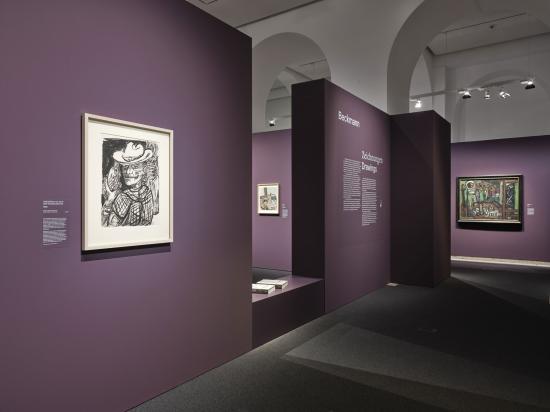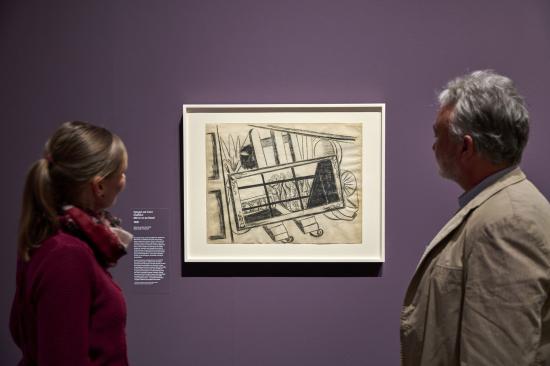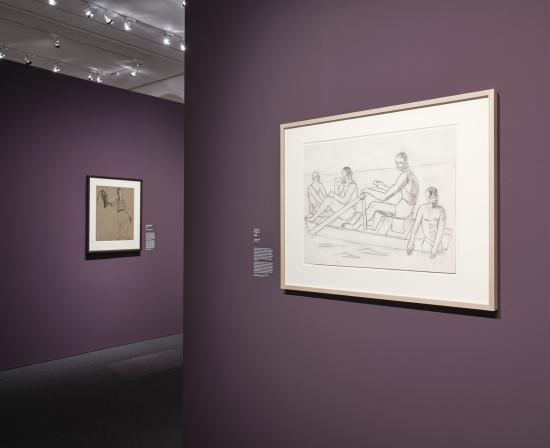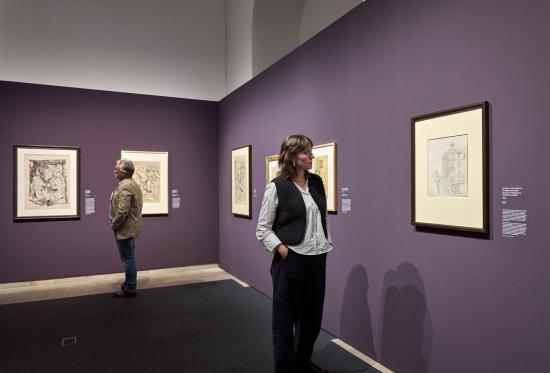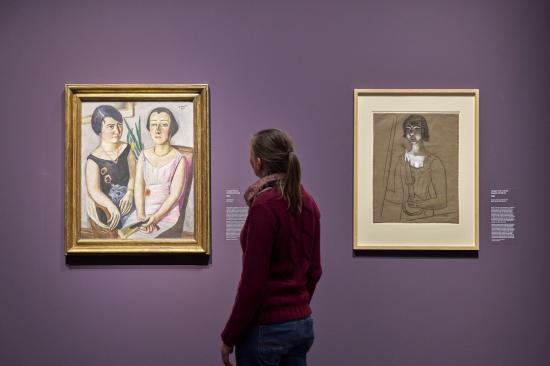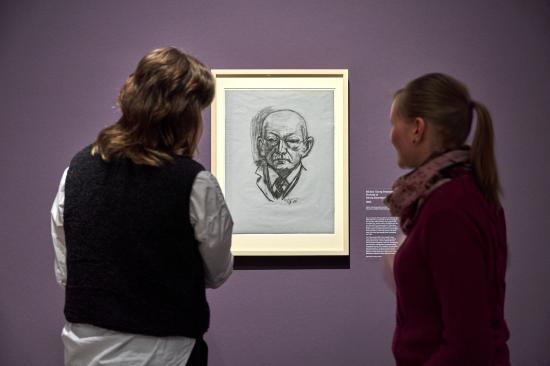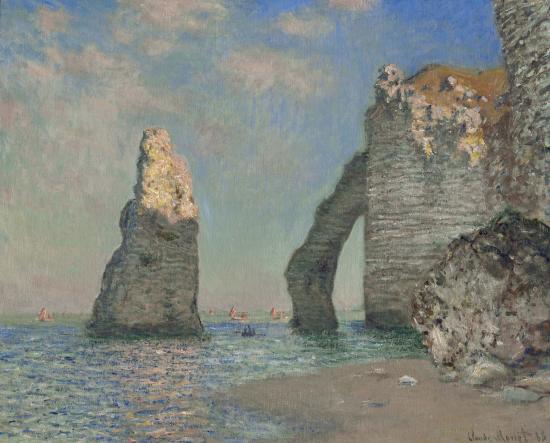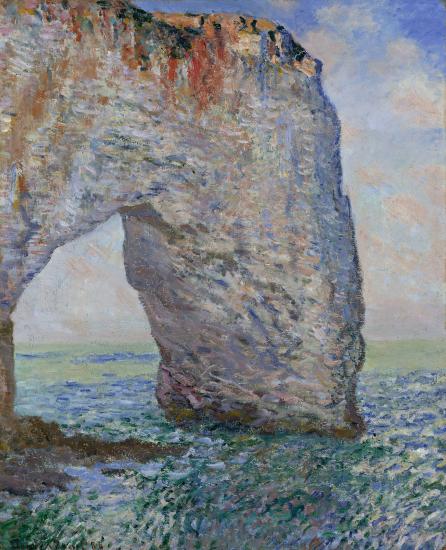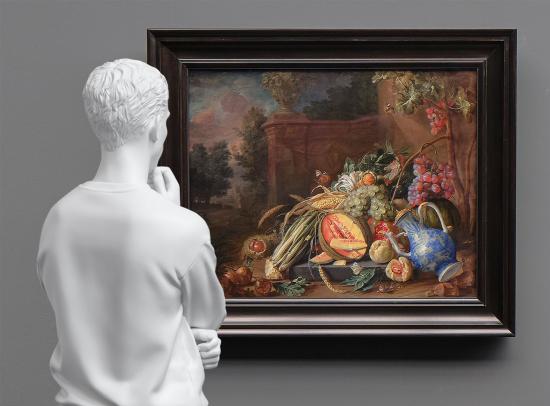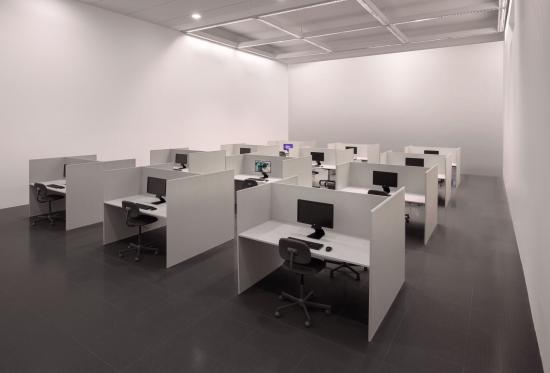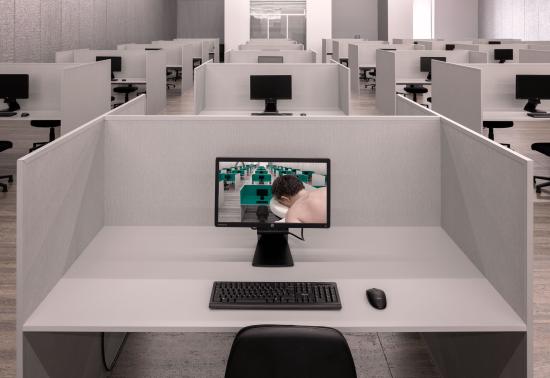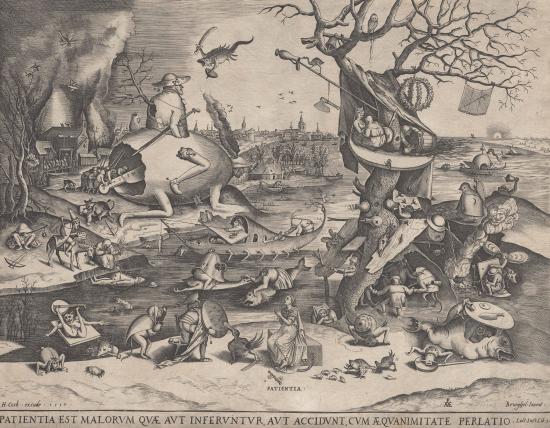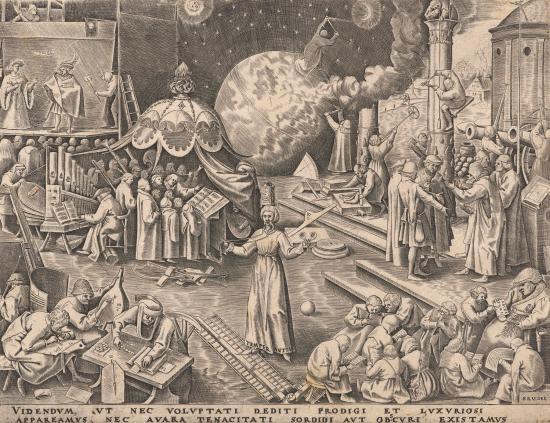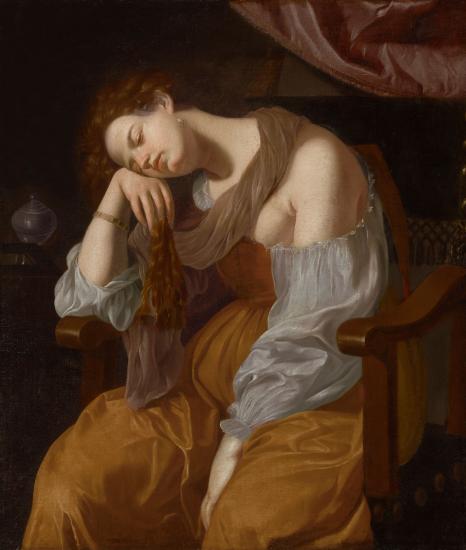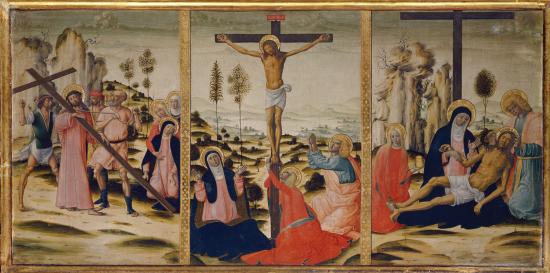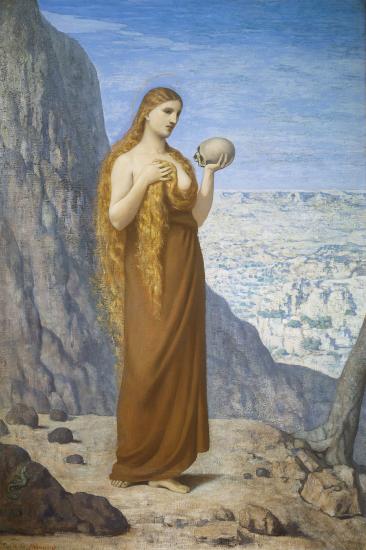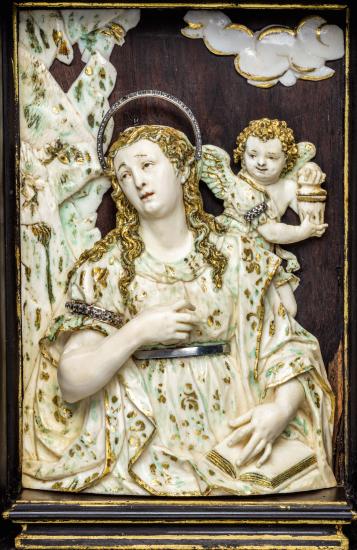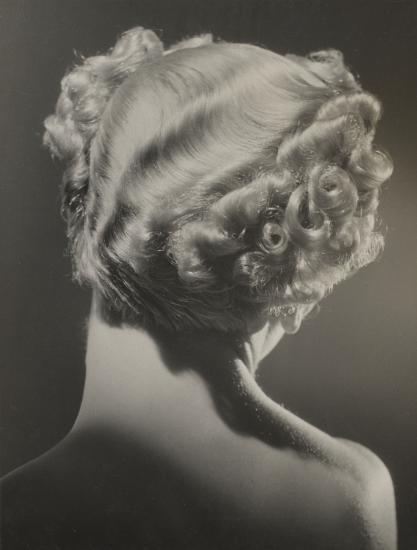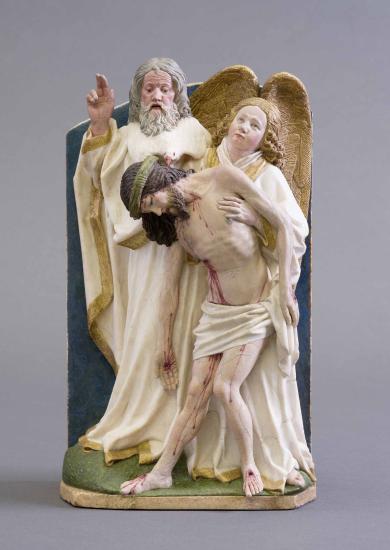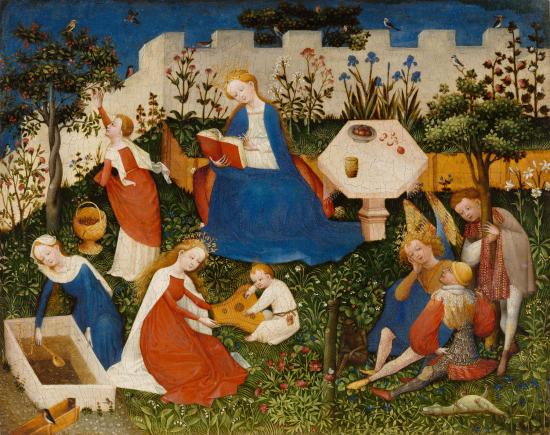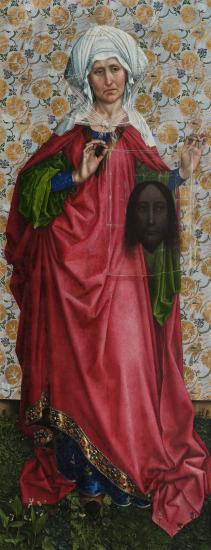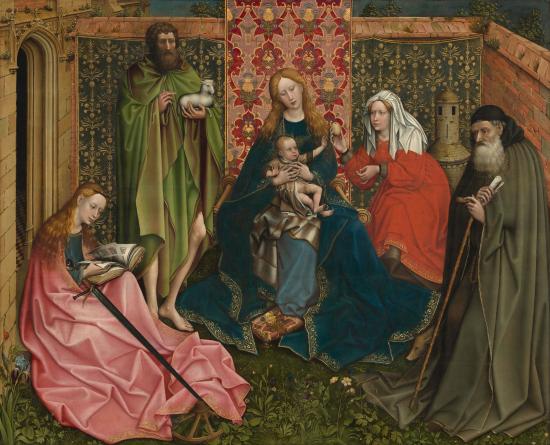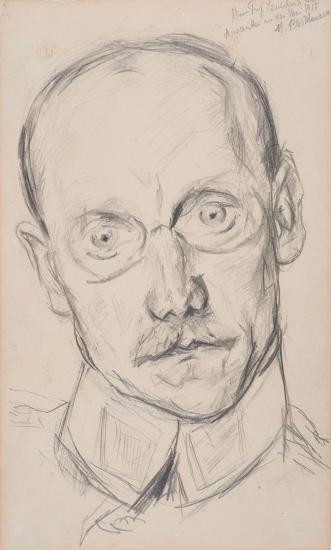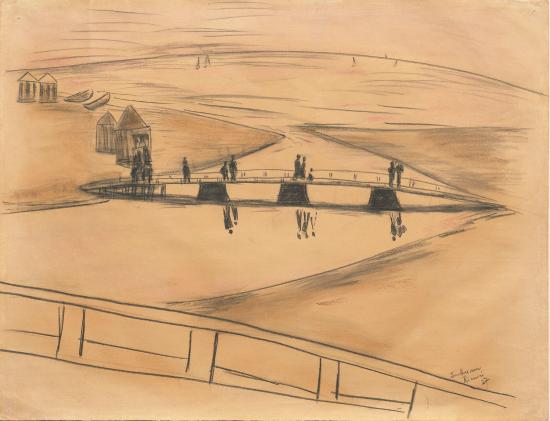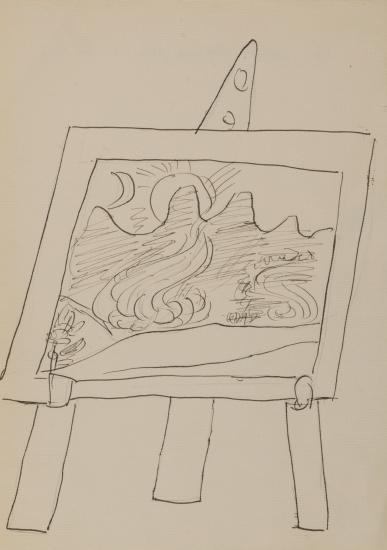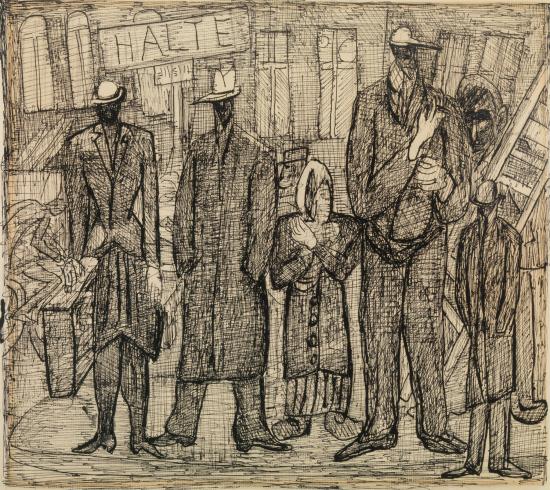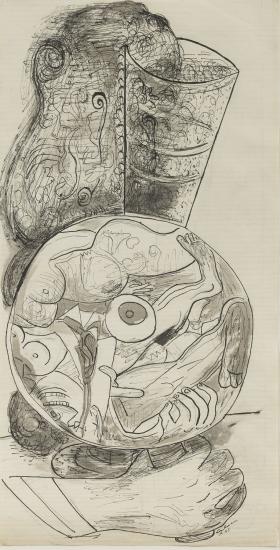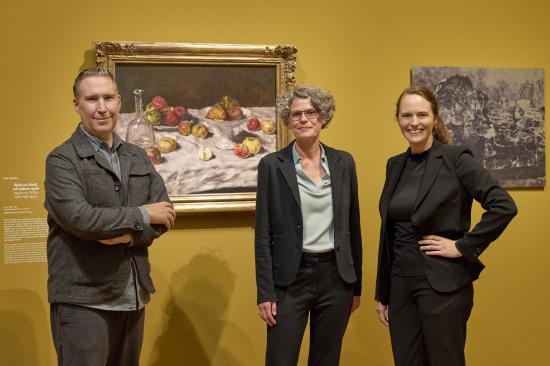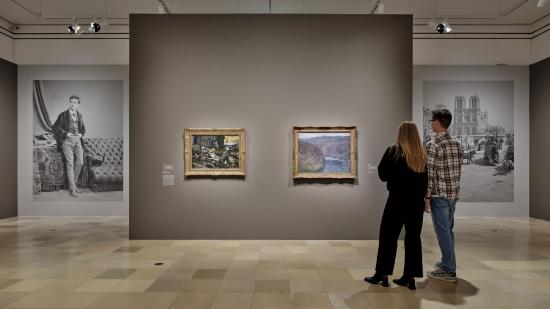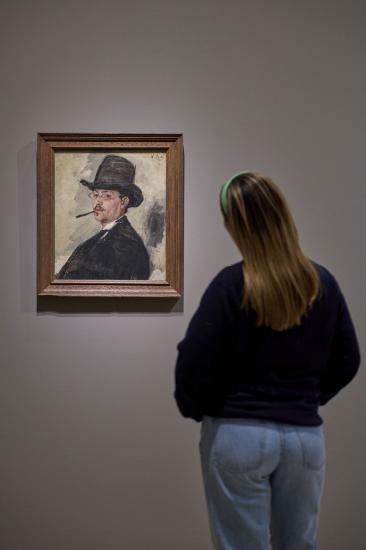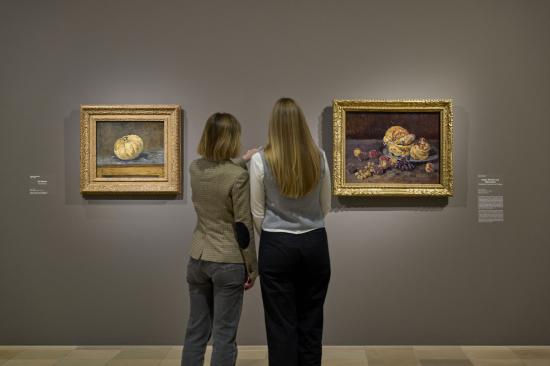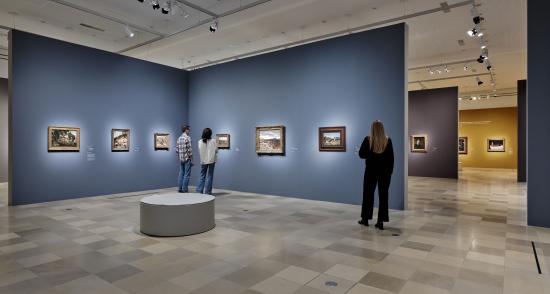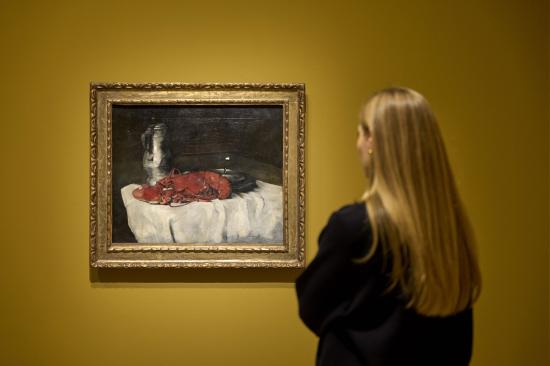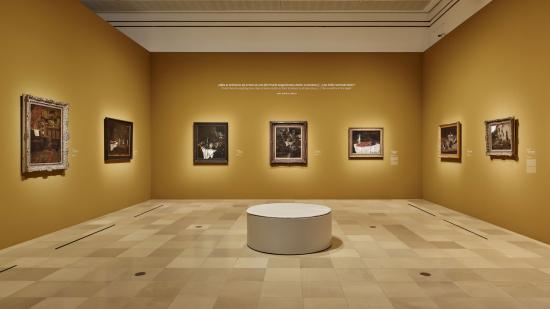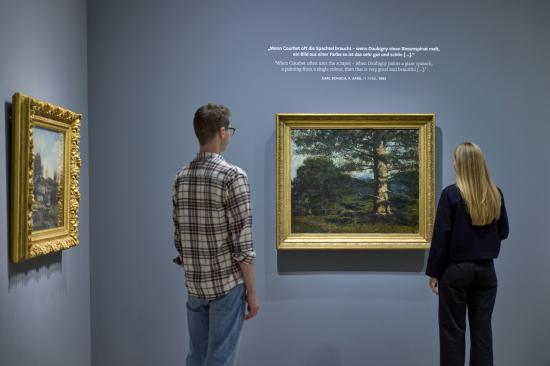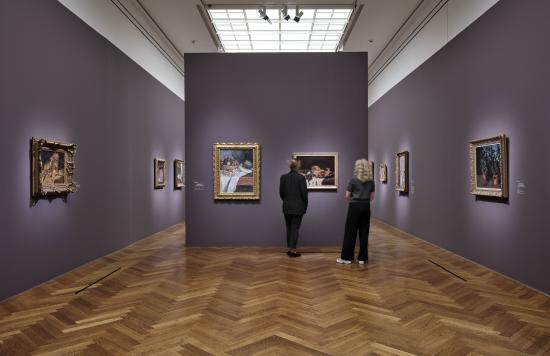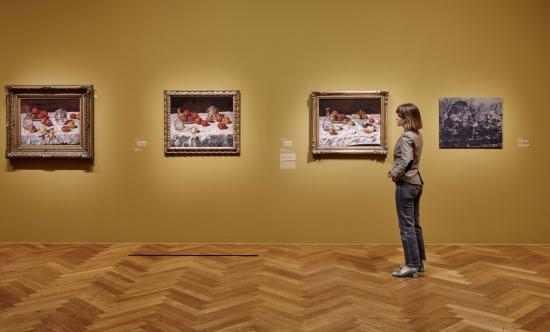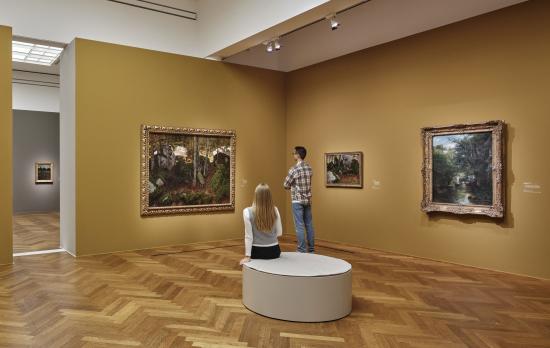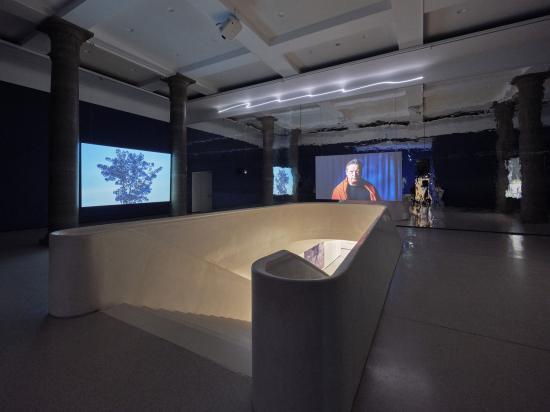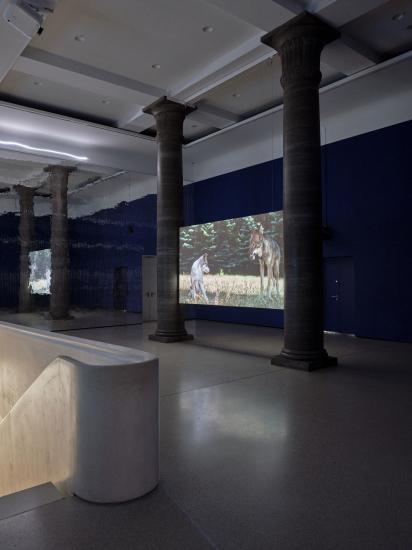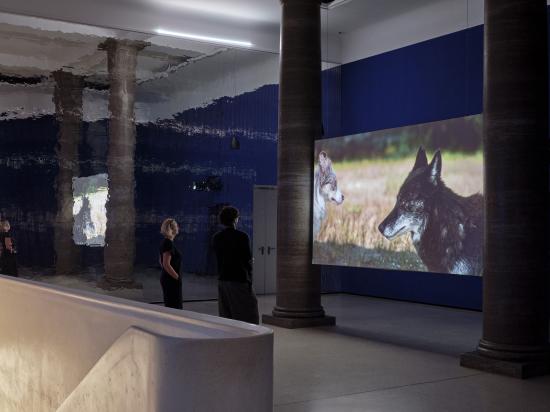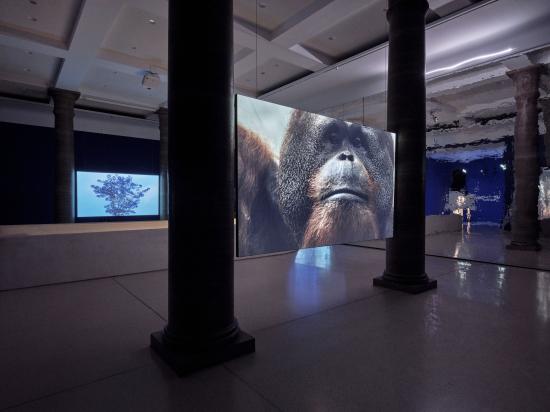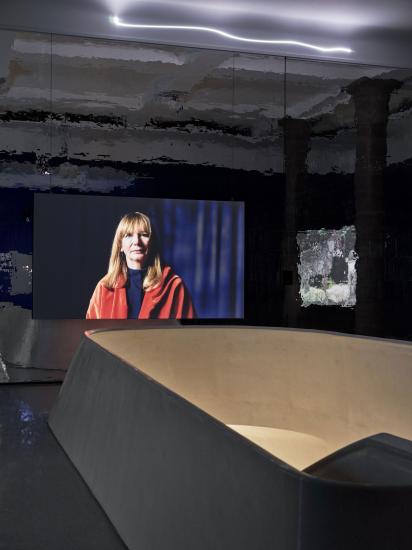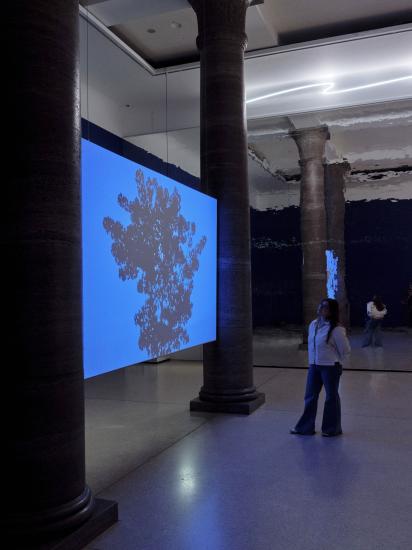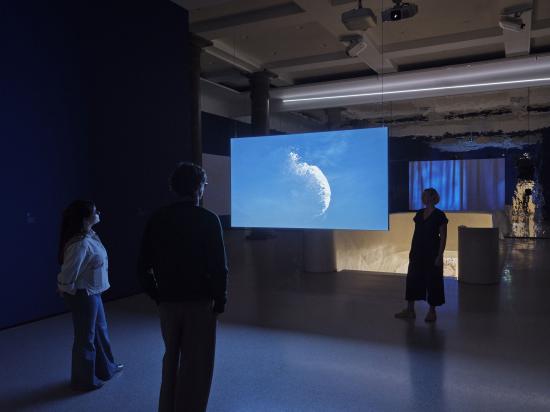Exhibition Preview 2026 and Outlook 2027
MONET ON THE NORMANDY COAST: THE DISCOVERY OF ÉTRETAT, BRUEGEL’S FANTASTIC WORLDS, NEW PERSPECTIVES WITH ELMGREEN & DRAGSET, SKIN IN ART ON PAPER, MAJOR EXHIBITION ON MARY MAGDALENE AND 2027 TO THE GARDEN OF PARADISE
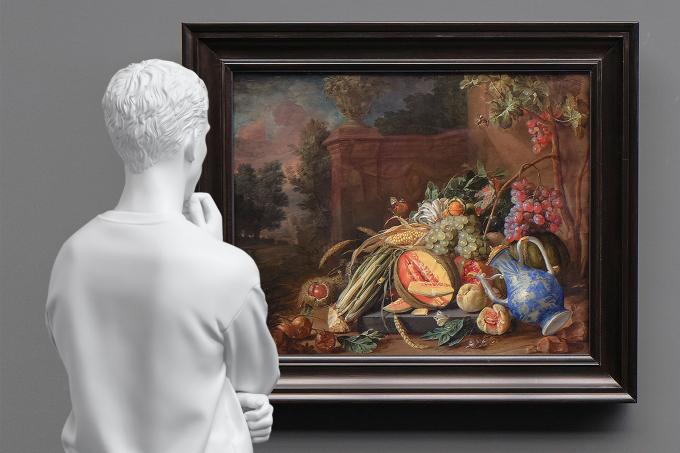
Press texts
Press release
Monet on the Normandy Coast.The Discovery of Étretat
19 MARCH – 5 JULY 2026
Exhibition Annex
Press Preview: Tuesday, 17 March 2026, 11.00 am
A coast becomes a myth: the cliffs of Étretat, located in Normandy on the Atlantic coast, captivated numerous artists in the 19th century. From 19 March to 5 July 2026, the Städel Museum will present a major exhibition dedicated to the artistic discovery of the former fishing village of Étretat and its influence on modern painting. Around 170 exceptional paintings, drawings, photographs and historical documents on loan from leading French, German and other international museums as well as several private collections will be on display in Frankfurt. Among them are no fewer than twenty-four works by Claude Monet.
Curators: Alexander Eiling (Head of Modern Art, Städel Museum), Eva Mongi-Vollmer (Curator, Städel Museum), Stéphane Paccoud (Chief Curator of 19th-Century Paintings and Sculptures, Musée des Beaux-Arts de Lyon), Isolde Pludermacher (General Curator of Paintings, Musée d’Orsay, Paris)
Project Managers: Eva-Maria Höllerer (Curator, Städel Museum) and Nelly Janotka (Assistant Curator, Städel Museum)
Sponsored by: Fraport AG, Fontana Foundation, Städelscher Museums-Verein e. V.
Marketing and Media Partners: City of Frankfurt am Main – Department of Culture and Science, Alnatura Produktions- und Handels GmbH, Ströer Deutsche Städte Medien GmbH, Frankfurter Allgemeine Zeitung, arte
You can find the full press release here as a PDF.
PRESS RELEASE
Exhibition Preview 2026 and Outlook 2027
MONET ON THE NORMANDY COAST. THE DISCOVERY OF ÉTRETAT, BRUEGEL’S FANTASTIC WORLDS, NEW PERSPECTIVES WITH ELMGREEN & DRAGSET, SKIN IN ART ON PAPER, MAJOR EXHIBITION ON MARY MAGDALENE AND 2027 TO THE GARDEN OF PARADISE
You can find the full press release here as a PDF.
PRESS RELEASE
BECKMANN
3 December 2025 to 15 March 2026
Exhibition Hall of the Department of Prints and Drawings
Press Preview: Tuesday, 2 December 2025, 11.00 am
Max Beckmann created his work in a world marked by crises and upheavals, transforming his experiences of this into a visual language that remains fascinating to this day. The most intimate part of his oeuvre are his drawings: like a diary, they document his artistic development, serving as a medium for observation and for creating imagery. The Städel Museum is now putting these works centre stage and presenting some eighty pieces from all phases of his career—from little-known drawings to outstanding major works. They offer a direct and intense insight into the life and work of Max Beckmann (1884–1950), one of the most important artists of the modern era.
The Städel Museum holds one of the most outstanding Beckmann collections in the world and has been dedicated to collecting, researching and communicating his work for more than a century. In 2021, the museum received a remarkable addition to its holdings in the form of important permanent loans from the collection of Karin and Rüdiger Volhard. This, together with the publication of the three-volume catalogue raisonné of Max Beckmann’s black-and-white drawings by Hirmer Verlag—with which Hedda Finke and Stephan von Wiese have closed one of the last major gaps in research on Beckmann’s drawings—is the occasion for this retrospective exhibition.
The exhibition is based on drawings from the Städel Museum’s own collection, complemented by loans from renowned international museums and private collections, including The Museum of Modern Art in New York, the British Museum in London, the Art Institute of Chicago, the Kunstmuseum Basel, the Hamburger Kunsthalle, the Kupferstichkabinett – Staatliche Museen zu Berlin and the Museum der bildenden Künste Leipzig. Selected paintings and prints also provide insights into Beckmann’s working process and the interplay of different media.
Philipp Demandt, Director of the Städel Museum, on the exhibition: “Max Beckmann, the Städel Museum and the city of Frankfurt am Main have been closely linked for over a century. Despite the loss of almost all of the artist’s works in its holdings during the Nazi era, the museum now boasts a Beckmann collection of international standing. With the current exhibition, we are focusing specifically on Beckmann’s drawings for the first time in over forty years. They open up a fascinating cosmos of his work and make his artistic development immediately tangible—not least thanks to the outstanding collaboration with Hedda Finke and Stephan von Wiese, the editors of the three-volume catalogue raisonné of his drawings.”
The curators Regina Freyberger, Head of Prints and Drawings after 1800 at the Städel Museum, Hedda Finke and Stephan von Wiese, authors of the three-volume catalogue raisonné of Beckmann’s drawings, add: “The drawings are a key to Beckmann’s work. Through drawing, he developed his unmistakable visual language, captured what he saw and experienced, shaped his personal worldview and transformed fleeting impressions into multi-layered, meaningful compositions. In the course of his life, he produced more than 1,900 black-and-white drawings in pen, chalk or pencil, not bound in sketchbooks—ranging from quick sketches to autonomous images. The exhibition presents a concentrated and representative selection of these works, which—supplemented by individual colour works, prints and paintings—allow visitors to experience the intensity of Max Beckmann’s drawing.”
Curators: Hedda Finke and Stephan von Wiese (catalogue raisonné of Max Beckmann’s drawings), Regina Freyberger (Head of Prints and Drawings after 1800, Städel Museum)
Sponsored by: Adolf Würth GmbH & Co. KG, Dagmar-Westberg-Stiftung, Städelscher Museums-Verein e. V.
With additional support from: Franz Dieter und Michaela Kaldewei Kulturstiftung, Dr. Ina Petzschke-Lauermann
Media Partners: Frankfurter Rundschau, arte
Cultural Partner: hr2-kultur
You can find the full press release here as a PDF.
Wall texts "Beckmann"
PRESS RELEASE
ASTA GRÖTING. A WOLF, PRIMATES AND A BREATHING CURVE
5 SEPTEMBER 2025 TO 12 APRIL 2026
Collection of Contemporary Art
Press Preview: Friday, 5 September 2025, 9.30 am
Intimate moments and closeness characterize the multifaceted work of the German artist Asta Gröting (b. 1961). Originally and still working as a sculptor, she has expanded her artistic practice to include film and video. She has been one of the most influential figures in contemporary German art since the 1990s. In her work, she renders the invisible visible by focusing on processes that often go unnoticed in everyday life, as well as on interpersonal relationships. From 5 September 2025 to 12 April 2026, the Städel Museum will present a solo exhibition of the artist’s work in its Collection of Contemporary Art, featuring eight works created between 2015 and 2025, including seven video works and one laser projection specially developed for the exhibition. This selection enables visitors to experience the fluid transitions between nature and culture, intimacy and distance, the familiar and the foreign. The videos capture or stage moments from Gröting’s own environment and human existence. Her deliberate manipulation of time lends the works a particular intensity. The films are more than visual representations of our environment: they open up contemplative spaces that encourage reflection on the intricacies of hidden relationships and their dynamics.
Through her work, Gröting shows how art can act as a medium for interpersonal connections by capturing intimate and intense encounters. Her sensitive translation of captivating moments into moving images invites viewers to explore the subtle, often hidden liminal states of existence, and experience the poetry of the moment anew. Highlights of the exhibition include the work Breathing Curve (2025), created especially for the exhibition, and the premiere of her latest video work, Matthias, Helge and Asta (2025), featuring Matthias Brandt, Helge Schneider and Asta Gröting herself as protagonists.
Philipp Demandt, Director of the Städel Museum: “Asta Gröting’s films reveal the visual poetry of our everyday lives through precise observation and give space to the hidden. The Städel has owned the sculptural work We, We, We, You, You, I (1994) by the artist since 2019. With this exhibition, we are deliberately placing an emphasis on the artist’s video art. Gröting’s work represents an artistic practice that addresses social and existential issues in a multilayered way. Her video art explores the boundaries between staging and everyday life by developing traditional narrative forms further. It thus ideally complements the profile of the Collection of Contemporary Art at the Städel Museum.”
“In her work, Asta Gröting focuses on things that often escape our attention, such as subtle gestures of everyday life, empty spaces and the relationships between humans and animals. The works on display are based on precise observations, in which the artist shifts meanings and condenses sensations. Gröting’s intense video works focus on the seemingly invisible, as well as on psychological processes, rendering them tangible for viewers. Her concentrated reflections question our communication, our environment, and our perception. Without providing clear answers, she creates an open space for personal feelings,” adds Svenja Grosser, Head of Contemporary Art at the Städel Museum and curator of the exhibition.
Curator: Svenja Grosser (Head of Contemporary Art, Städel Museum)
Project Manager: Gioia Mattner (Assistant Curator of Contemporary Art, Städel Museum)
PRESS RELEASE
CARL SCHUCH AND FRANCE
24 SEPTEMBER 2025 – 1 FEBRUARY 2026
Exhibition Annex
Carl Schuch (1846–1903) is one of the most fascinating painters of the 19th century. From 24 September, the Städel Museum will present the major autumn exhibition “Carl Schuch and France”, which will take a comprehensive look at his work, as well as at Impressionist and Realist painting. Schuch has long been an insider tip. He is perhaps the best-known “unknown” protagonist of late 19th-century painting. His art is a discovery. As a restless cosmopolitan, he broke away from national attributions early on and devoted himself uncompromisingly to painting. During his lifetime, he was hardly known to the public, but after his death, the art world quickly recognized the quality of his work, before it later fell into oblivion again.
The Städel Museum is bringing together around seventy of Schuch’s paintings in a stimulating dialogue with some fifty important works by French artists, including Paul Cézanne, Camille Corot, Gustave Courbet, Édouard Manet and Claude Monet. The exhibition focuses on Schuch’s years in Paris, where he experienced his most artistically formative period from 1882 to 1894. Schuch’s painting exudes a quiet yet impressive power. His work is characterized by subtle colour nuances, an extraordinary sensitivity to light and atmosphere, and an intense search for artistic truthfulness. Refusing to be pigeonholed into any particular style, he developed an unmistakable visual language.
This exhibition is more than a tribute. It presents Carl Schuch as an artist who, with his European perspective and unwavering attitude, wrote an independent chapter in art history. Current art technology research deepens our understanding of his working methods and opens up new perspectives on his work. The findings are presented in a clear and comprehensible way in the exhibition. With “Carl Schuch and France”, the Städel Museum invites visitors to embark on a journey of discovery that puts the artistic cosmopolitan and his impressive visual world in the spotlight they deserve.
Here is the full press release as a PDF.
Wall texts "Carl Schuch and France"
Social Media
Social Networks
Films
-
-
 11.12.2025: Beckmann | Jetzt im STÄDEL
11.12.2025: Beckmann | Jetzt im STÄDEL
-
 10.12.2025: Gastkommentar: Kunst und Bakterien
10.12.2025: Gastkommentar: Kunst und Bakterien
-
 29.10.2025: Lasst uns reden – Städel Gespräche | Museum – ein Ort für Demokratie?
29.10.2025: Lasst uns reden – Städel Gespräche | Museum – ein Ort für Demokratie?
-
 10.10.2025: Carl Schuch und Frankreich | Jetzt im STÄDEL
10.10.2025: Carl Schuch und Frankreich | Jetzt im STÄDEL
-
 19.09.2025: Lasst uns reden – Städel Gespräche | Die Macht der Bilder
19.09.2025: Lasst uns reden – Städel Gespräche | Die Macht der Bilder
-
 18.09.2025: Art meets science! 🖼️🌊
18.09.2025: Art meets science! 🖼️🌊
-
 16.09.2025: Was bewegt Asta Gröting?
16.09.2025: Was bewegt Asta Gröting?
-
 28.07.2025: Gastkommentar: Kunst und Meeresforschung
28.07.2025: Gastkommentar: Kunst und Meeresforschung
-
 23.07.2025: How does an exhibition come together?
23.07.2025: How does an exhibition come together?
-
 17.07.2025: Annegret Soltau's photo stitchings
17.07.2025: Annegret Soltau's photo stitchings
-

